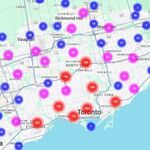scarberiankhatru
Senior Member
This comment will no doubt get lost in the debate about geographic boundaries etc. But my comment is why does it matter what the population of the region is? What I mean is that certainly it does matter but why does it matter to a) us personally b) the society as a whole?
The answer to a) is perhaps because place is interwoven with our sense of identity and everyone wants to be a winner and hence part of a winning team. Population growth seems to be some tangible metric to quantify the winning-ness of place.
Where we might run into problems is b). Large populations create diversity and high calibre levels of specialization and achievement. However, the real question is how are people contributing and benefiting from this arrangement. What is the point of a megalopolis where the majority of people live in substandard conditions at the expense of an elite class who operate at the highest level of human achievement? Why would the GTA at 9 million people be better than the GTA at 5.5million?
Just think of how many almanac editors and think tank members (and people like Richard Florida, I guess) would be out of jobs if we stopped comparing cities and regions...comparing the growth of cities is a growth industry!




